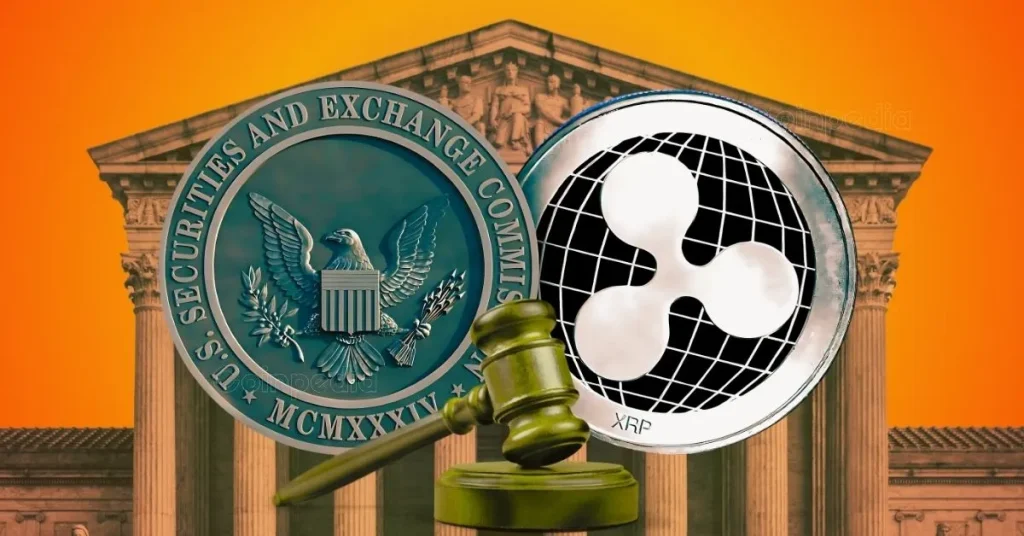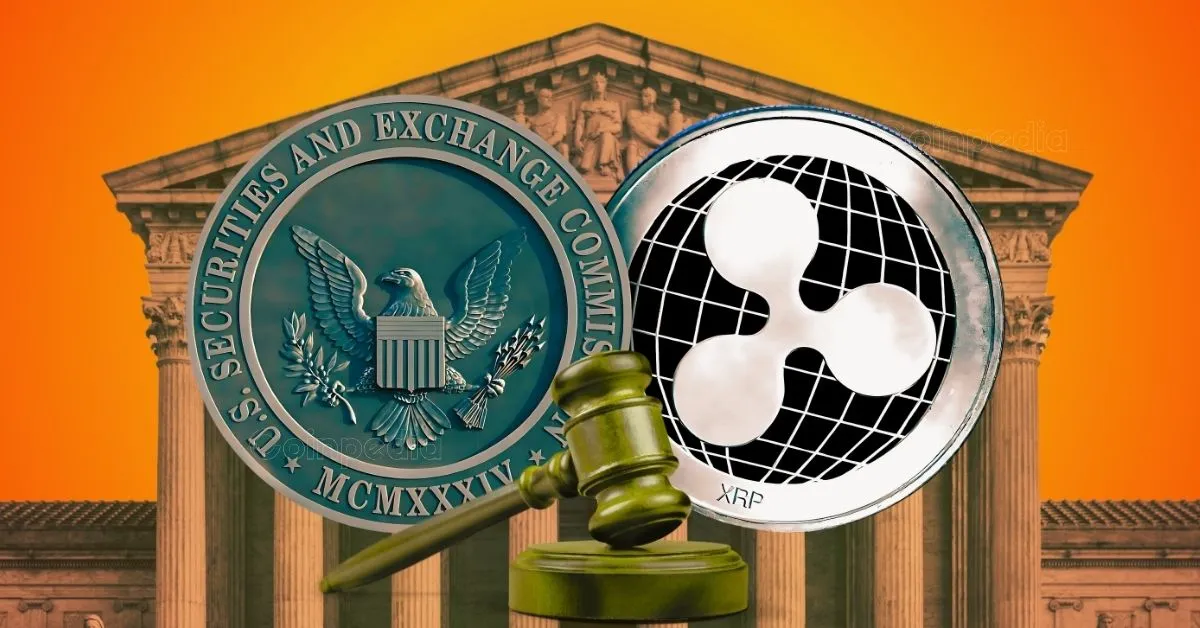
The ongoing legal battle between Ripple Labs and the U.S. Securities and Exchange Commission (SEC) has been a defining saga in the cryptocurrency world, with far-reaching implications for the future of digital asset regulation. The May 2025 rejection of a proposed $50 million settlement by District Judge Analisa Torres marked a pivotal moment in this high-stakes case, leaving both Ripple and the SEC to grapple with the fallout. This case is not just about Ripple and its XRP token; it is a bellwether for how the U.S. will regulate cryptocurrencies, with ripple effects across the entire industry.
The Case That Shaped Crypto Regulation
The legal dispute between Ripple and the SEC began in late 2020 when the regulatory agency accused Ripple Labs of conducting an unregistered securities offering, raising $1.3 billion through XRP token sales to institutional investors. At the heart of the matter was a fundamental question: Is XRP a security subject to SEC oversight? Judge Analisa Torres’ 2023 ruling attempted to strike a balance, concluding that XRP sales to retail investors via crypto exchanges did not constitute securities offerings, while institutional sales did violate securities laws. This nuanced decision provided partial vindication for Ripple, as it allowed the company to argue that XRP was not inherently a security, while the SEC could claim a partial victory by establishing that some of Ripple’s activities were indeed unlawful.
The case has been closely watched by the cryptocurrency industry, as its outcome could set a precedent for how other digital assets are regulated. If the SEC succeeds in classifying XRP as a security, it could lead to similar enforcement actions against other cryptocurrencies, potentially stifling innovation in the U.S. market. Conversely, if Ripple prevails, it could embolden other crypto projects to push back against regulatory overreach, potentially leading to a more favorable regulatory environment for digital assets.
Settlement Attempts and Twists
After years of legal wrangling, Ripple and the SEC signaled in 2025 that they were ready to bring the matter to a close. Initial discussions focused on a $125 million penalty and an injunction against certain XRP activities, but both sides eventually agreed to a sharply reduced $50 million fine, the immediate lifting of XRP sales restrictions, and the return of $75 million in escrowed funds to Ripple. This proposal was seen as a fair and efficient resolution by both parties, and it appeared that the case was finally nearing its conclusion.
However, Judge Torres’ rejection of the joint motion derailed these expectations. The judge found the proposal to be “procedurally improper,” citing a lack of adherence to established legal requirements for settlements at this stage in litigation. Specifically, the motion failed to demonstrate how the proposed resolution would serve the public interest, a key consideration in high-stakes regulatory cases. This decision forced both Ripple and the SEC to refile their motion with fuller documentation and a more compelling case for judicial approval.
The Broader Implications of the Rejection
Judge Torres’ decision to block the $50 million settlement highlights the broader concerns surrounding crypto regulation in the U.S. The judge’s insistence on procedural rigor suggests that the court is taking a cautious approach to setting precedents in this rapidly evolving industry. By slowing the process, Judge Torres is ensuring that any settlement reached is thoroughly vetted and transparent, which could ultimately benefit the broader crypto market by providing clearer regulatory guidelines.
The rejection also underscores the importance of public interest in regulatory matters. The court’s hesitation to rubber-stamp the settlement indicates a recognition that the outcome of this case will have far-reaching implications for the crypto industry. As such, the court is taking its time to ensure that the resolution is not only fair but also serves the broader public interest, which includes protecting investors while fostering innovation.
The Fallout: XRP Markets and Industry Reaction
The news of Judge Torres’ rejection sent shockwaves through the cryptocurrency market, with XRP’s price dropping by roughly 4% in 24 hours. This market reaction reflects the uncertainty and anxiety that continues to surround the Ripple case. Investors are keenly aware that the outcome of this legal battle could have significant implications for XRP’s future, and the prolonged legal drama has made it difficult for the market to price in the risks associated with the case.
Legal experts have been closely analyzing the judge’s ruling and the motions filed by both parties. Some see the rejection as a minor setback—a call for procedural tidiness rather than a substantive rebuke of the settlement terms. Others argue that the delay exposes vulnerabilities in Ripple’s strategy, forcing greater scrutiny on both past and ongoing XRP sales and Ripple’s disclosures. This heightened scrutiny could ultimately lead to a more favorable outcome for Ripple, as it may compel the company to provide more detailed and transparent information about its operations.
The Path Forward for Ripple and the SEC
For both Ripple and the SEC, the immediate roadmap is clear: refile the joint motion under Federal Rule of Civil Procedure 60, which governs relief from judgment or orders. This refiling will require both parties to explicitly outline how the $50 million deal resolves underlying issues, addresses injunctions, and advances the public interest. Typically, such filings require detailed admissions, clear frameworks for compliance, and arguments for why the deal sends the right signal to markets and stakeholders.
The SEC is expected to submit a status report by August 15, 2025, which will provide further clarity on the timeline and potential outcome of the case. If Judge Torres is satisfied with the revised motion and supporting evidence, she is likely to approve the settlement and lift the remaining restrictions on Ripple and XRP sales. However, if the court remains unconvinced, the legal standoff could drag on, potentially impacting Ripple’s operations and investor confidence well into 2026.
Potential for Broader Precedent
The Ripple case sits at a critical juncture in the evolution of crypto regulation. Should the $50 million settlement ultimately be approved, it could set a template for the SEC’s approach to enforcement against other crypto issuers. This template would likely involve retroactive penalties, public interest assessments, and explicit separation between retail and institutional market standards. Such a framework could provide much-needed clarity for the crypto industry, allowing companies to navigate regulatory requirements with greater confidence.
However, if the process collapses or further judicial scrutiny leads to a more punitive or prescriptive remedy, the result could be chilling for new token projects. Companies may be incentivized to avoid the U.S. market or seek more creative compliance strategies, potentially stifling innovation and growth in the digital asset space. The outcome of the Ripple case will therefore have significant implications for the future of crypto regulation in the U.S. and beyond.
Internal and External Pressures
For Ripple, finalizing the case is about more than just financial penalties. The company’s reputation, partnerships, and product roadmap all hang in the balance. The prolonged legal drama has already spooked some institutional partners and delayed expansion efforts, highlighting the importance of a swift and favorable resolution. For the SEC, the outcome will serve as a barometer for public—and Congressional—support for their crypto policy. With lawsuits against other exchanges being dropped and a more lenient posture signaled by new SEC Chair Paul Atkins, the commission must tread carefully to maintain its enforcement credibility while avoiding accusations of regulatory overreach.
Conclusion: A Cautionary Tale and an Inflection Point
Judge Torres’ refusal to rubber-stamp the $50 million settlement in the Ripple case highlights just how complex, consequential, and contested crypto regulation has become in the United States. What might have been the last chapter in a hard-fought legal odyssey has instead turned into an inflection point for the industry. The next few months will test Ripple’s legal acumen and resilience, the SEC’s appetite for shaping crypto’s evolution, and the market’s capacity to price in regulatory risk.
Amid procedural wrangling, shifting public sentiment, and high financial stakes, the verdict will echo far beyond XRP’s price chart. The outcome may well shape not just the fate of Ripple, but the rules by which all future digital assets must play. As the crypto industry watches closely, the Ripple case serves as a cautionary tale about the challenges of navigating regulatory uncertainty and the importance of transparency and procedural rigor in high-stakes legal battles. Ultimately, the resolution of this case will have lasting implications for the future of digital asset regulation in the U.S. and beyond.





